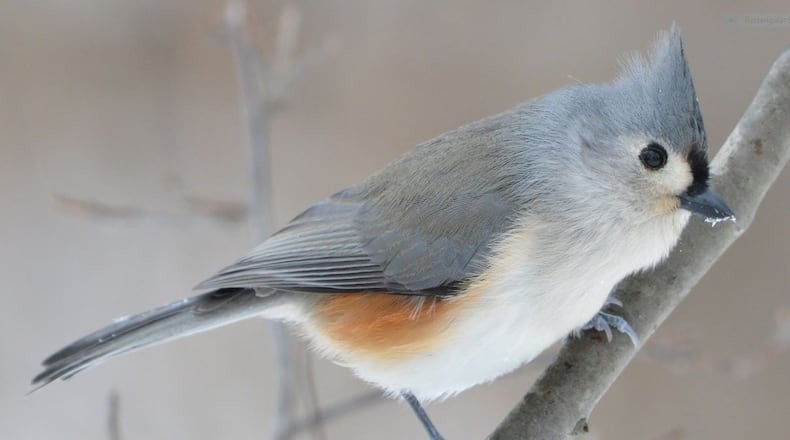They’re close cousins, almost inseparable at this time of year. If you have a bird feeder in your yard, you probably see them together nearly every day pecking for seeds, preferably black-oil sunflower seeds.
They are the Carolina chickadee and the tufted titmouse, two of Georgia's most common year-round songbird species. Both belong to the scientific family Paridae, although they bear little family resemblance to each other — except for their small sizes. Each weighs only about a third of an ounce.
The titmouse’s prime marks include gray plumage, light underparts, a prominent crest and rusty-brown flanks. The handsome Carolina chickadee sports a distinctive black cap, black bib, gray wings and back and whitish underside.
During winter, the cousins are especially close, usually joining in mixed flocks for better security and chances of finding food. Such flocks also may include white breasted nuthatches and Carolina wrens — and occasionally kinglets and other small birds. But no matter the make-up, the flocks usually are led by titmice and chickadees.
Studies indicate that several other bird species may stay in close range of the flocks to hear the alarm calls of titmice and chickadees that warn of a hawk or other danger — thus using the tiny birds as sentinels.
Being cousins, titmice and chickadees have some common habits. They often roost together in birdhouses on cold winter nights. At feeders, they take only one seed at a time, fly away and perch nearby to eat it. They also cache many seeds in tree bark and other spaces to retrieve and eat later during lean times.
Other characteristics of the Paridae family are constant curiosity and boldness. That may explain why chickadees and titmice often allow close approaches by humans and are among the first birds to show up at newly stocked feeders.
IN THE SKY: From David Dundee, Tellus Science Museum astronomer: The Quadrantid meteor shower is expected to reach a peak of about 50 meteors this weekend in the northern sky after dark. The moon will be full next Friday night (Jan. 10). Only two planets are visible right now. Venus is low in the west just after dark and sets about two hours later. Mars is low in the east about two hours before dawn.
About the Author
Keep Reading
The Latest
Featured


